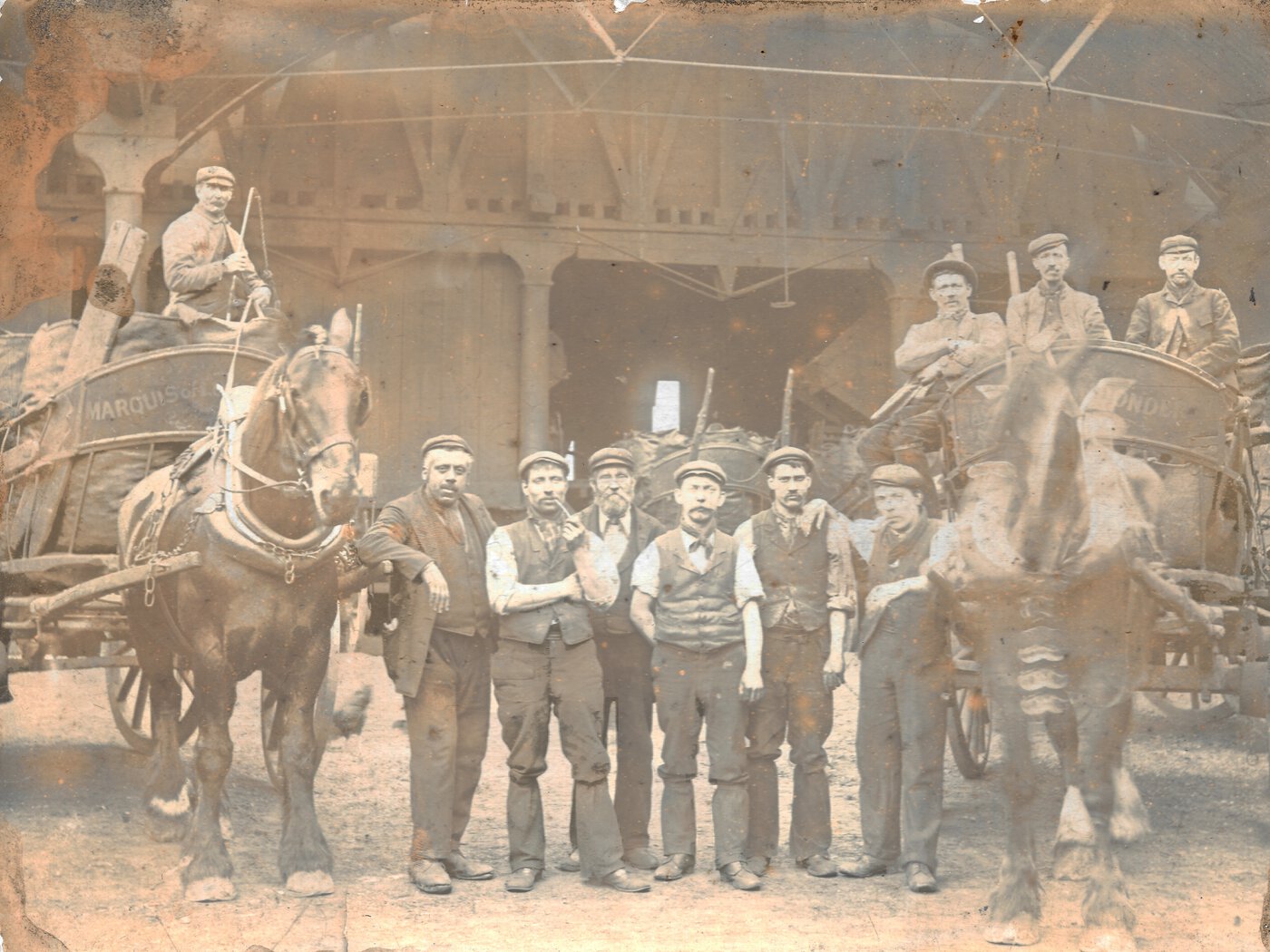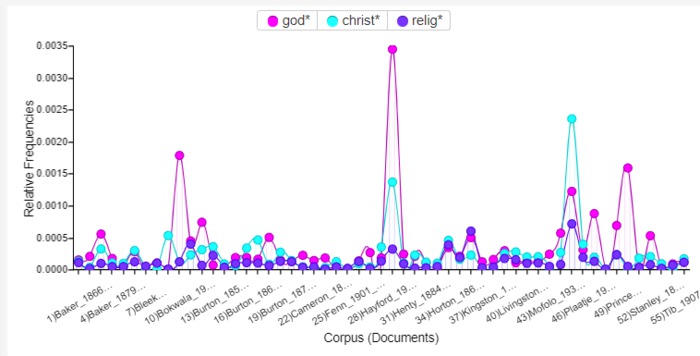Overview
This page introduces a small set of ongoing thematic initiatives that support the mission of One More Voice. The growth of these initatives reflects the central objectives of the project's second development phase.
Thematic Initiatives
William Ivens Craft and the Transatlantic Victorian World

Anonymous, “Group of Workmen (Including William Ivens Craft) with Two Horse-Drawn Carts” (Photograph, [c.1910]), Personal image collection of Martin Copeland. Used by permission. This is the only known photograph of William Ivens Craft. He appears in the image leaning casually against the left-hand cart with one elbow resting upon the shaft. This photograph of William Ivens in an English coal yard among mostly-white fellow workers reflects the complex racial dynamics that the One More Voice digital exhibition will explore. Moreover, although the story of his parents – William and Ellen Craft – remains famous due to their sensational escape from slavery, William Ivens' own struggles and quest for belonging in the post-emancipation transatlantic world have received considerably less attention from historians, thereby making the recovery work of the planned exhibition all the more significant.
William Ivens Craft and the Transatlantic Victorian World (2022, anticipated), a digital exhibition currently being developed by graduate student Hope McCaffrey (Northwestern University), will piece together the life of William Ivens Craft, whose personal history exemplifies the struggle and perseverance of individuals who lived a generation removed from American slavery, but who were still subject to the far-reaching transatlantic impacts of this racist institution.
The exhibition’s twelve digital rooms (i.e., separate but linked web pages) will engage with the themes of transatlantic anti-Blackness, what Saidiya Hartman calls “afterlife of slavery,” the tumultuous politics and rampant racism in the post-emancipation Atlantic world, and citizenship in the context of the emergence of the modern nation state. This exhibition will also bring together over twenty unpublished letters from the Bodleian Library, Oxford by William Ivens Craft and others in his world, including Ellen Craft, Elizabeth Pease Nichol, and Robert Nicholas Fowler.
Through this approach, the exhibition will explore William Ivens Craft’s experience in the Victorian Atlantic world and the ways in which his life intersected with the foregoing currents in order to illustrate the reach and enduring consequences of racial slavery and the journeys of those who fought against it and its remnants. The exhibition will also seek to cultivate a generative methodological and representational pedagogy that centers BIPOC (Black, Indigneous, and People of Color) voices and privileges polyvocal and non-academic epistemologies.
William Ivens Craft lived in the midst of an Atlantic world adjusting to abolition, drawing new lines around the rising nation-state, and grappling with the world-warping technological advances in transportation and industry. He was born and educated in England, spent the years of his adolescence in Georgia, then returned to England hoping to find better prospects than the American South – recently reclaimed by white supremacists and “home rule” – could offer. William Ivens carved out a living and sense of belonging in Victorian London despite facing a web of transatlantic anti-Blackness. For instance, he encountered paternalistic attitudes from former white abolitionists, struggled to find stable housing and clothing, and ultimately established roots in England, where his descendants still live.
Inheritors of the Craft family history, who span the Atlantic world, continue to recount the family’s remarkable escape from slavery and encourage the incorporation of the family’s legacy into the historical memory and built environment of England. The narrative of William Ivens’ life, as presented in the digital exhibition in conjunction with archival documents and critically-encoded editions of letters published by One More Voice, will offer an alternative understanding of post-emancipation history through the story of one individual whose life that history impacted considerably.
Corpus of Africa-Centered Literary Works, 1830-1930 (2021)

Caitlin Matheis, “Religion Frequency Chart 1” (Visualization [Voyant Screenshot], 2021). Creative Commons Attribution 4.0 International. This visualization demonstrates some of the initial computational analysis Caitlin Matheis (University of Nebraska-Lincoln) carried out on the Corpus of Africa-Centered Literary Works that she developed. In this visualization Matheis explores the inclusion of religious elements in the corpus, whether as a justification for colonization or as part of discussions of local African cultural practices.
The project for Corpus of Africa-Centered Literary Works, 1830-1930 (2021), funded by the University of Nebraska-Lincoln’s Emergency Research Gap Funding Program ($2000) and a Research Assistantship from the English Department, focused on the development of a corpus of Africa-centered works and supported preliminary computational text analysis of the corpus.
Over the spring and summer 2021 semesters, Caitlin Matheis, a graduate student at UNL, developed the corpus so that it brought together 62 plain text (TXT) files of nineteenth- and early twentieth-century literary works in English. The resulting corpus, now published in full by One More Voice, contains over 6.5 million words and balances both fiction and non-fiction works as well as African- and British-authored works (31 authors total are represented). To support further study of the corpus, Matheis also authored a critical essay (PDF) that outlines her initial work in using computational text analysis (especially Voyant Tools) to engage with the corpus and, separately, created a series of annotated screenshots that explore the corpus using a variety of visualization techniques.
![Map of southern africa with the territories of Khama, Sebele, and Bathoeng [sic] outlined in red.](/img/main-pages/liv_027042_0001_deriv-1396px.jpg)